Scotland’s iconic castle is a treasure trove of unexpected delights
Seven Wonders within Edinburgh Castle

Hard to miss: Edinburgh Castle occupies a lofty hilltop perch in the middle of the city.Credit: iStock
With nearly 1000 years of siege-riddled history, Edinburgh Castle stands proud on the remnants of an old volcano – with big guns, prisons and precious crowns inside.
1 Reflect in St Margaret’s Chapel
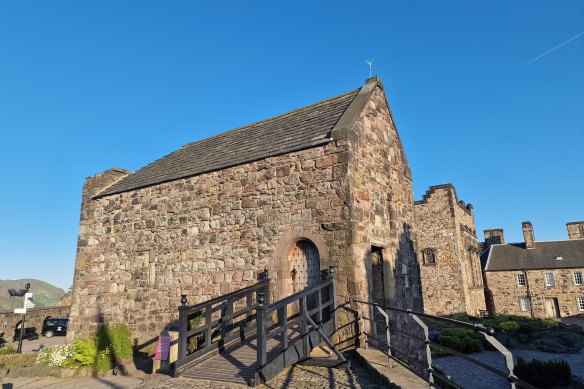
St Margaret’s Chapel is Edinburgh’s oldest building.
The simple, barrel-vaulted St Margaret’s Chapel dates back to approximately 1130, and was built under the reign of St Margaret’s son, King David I. When Robert the Bruce captured the castle in 1314, he ordered the castle buildings to be destroyed, but decided to spare the Romanesque chapel – meaning it’s Edinburgh’s oldest building. The stained-glass windows aren’t quite as old, however – they were made by artist Douglas Strachan in 1922.
2 Be awed by Mons Meg
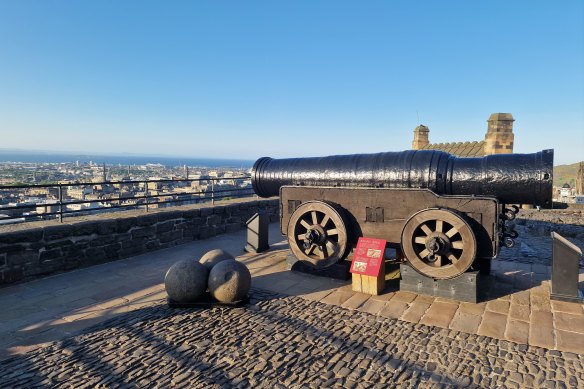
Mons Meg could fire a 150 kilogram stone ball up to three kilometres.
Just outside the chapel is a big beast of a gun. Mons Meg was built in the 15th century, weighs nearly seven tonnes, and could fire a 150 kilogram stone ball up to two miles (more than three kilometres). It was sent around Scotland to smash castles and quell rebellions – enemies often surrendered on sight. The big beast has a great view, too. The Forewall Battery offers a panorama over the New Town, Firth of Forth, Calton Hill and, more adorably, the tiny Dog Cemetery garden built into the ramparts for deceased regimental mascots.
3 Cover your ears for the One O’Clock Gun
More modern is the 105mm field gun next to the Argyle Battery, which is fired at precisely 1pm every day. Historically, this is to allow the ships on the Firth of Forth to accurately set their times. The One O’Clock Gun was introduced in 1861, replacing a dropping ball on Calton Hill, which was too often obscured by mist. Anyone walking past oblivious is in for a jolting shock at 1pm – the noise is boomingly loud.
4 Shudder in the Prisons of War
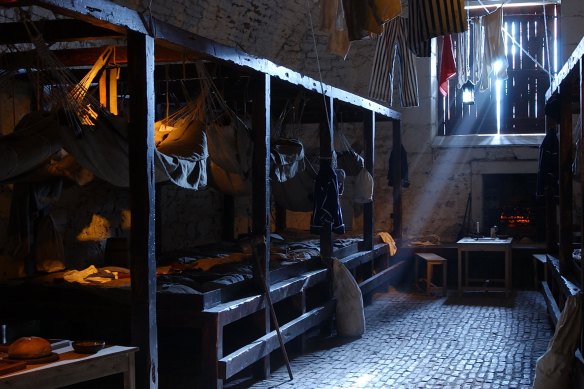
Prisons of War.
Over the centuries, Edinburgh Castle has been repeatedly used as a prison. The ship cabin-like vaults have been restored to how they would have looked in 1781, when prisoners from the American Revolutionary War slept in the hammocks. Museum-style exhibits tell of the conditions – one prisoner pretended to be a Frenchman called Pierre as the French got better rations. There’s also one of the earliest ever depictions of the US Stars and Stripes flag, etched above a door latch.
5 Look up in the Great Hall
Built for the wedding of Scotland’s King James IV and Margaret Tudor – the oldest sister of English King Henry VIII – in 1511, the Great Hall is decorated with suits of armour and weaponry. The jaw-dropper, however, is the wooden roof. Made without screws or nails, the handsome, elaborately painted masterpiece is held up by wooden pins and beam pressure. It’s one of only three such roofs left in the UK – most of the others were destroyed after the English Revolution by dictator Oliver Cromwell.
6 Be dazzled in the Crown Room
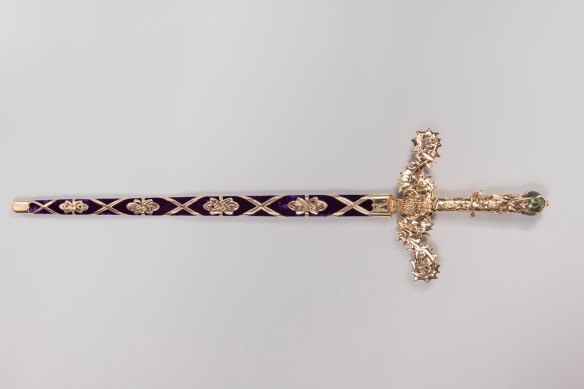
The Elizabeth Sword, commissioned for King Charles III in 2022.
Cromwell also had the English Crown Jewels melted down for coins, making Scotland’s once-lost crown jewels – the Honours of Scotland – the UK’s oldest. They’re on show in the Crown Room of the Royal Palace, with the star of the show being King James V’s jewel-encrusted crown made for his wife’s coronation in 1540. It has not been worn since the United Kingdom came into being in 1707, and it lies next to the gleaming, thistle-hilted Elizabeth Sword, commissioned for King Charles III in 2022.
7 Pay respect at the Scottish National War Memorial
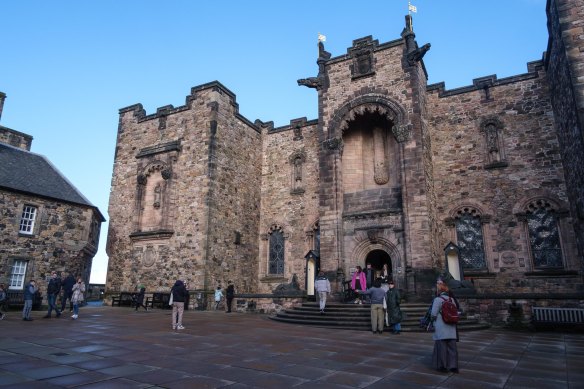
The Scottish National War Memorial opened in 1927.
Dripping with symbolic detail, the National War Memorial is built on the highest point of Castle Rock. You can see the summit beneath the silver casket containing the honour roll of Scots who died serving their country. Also fascinating is the bronze frieze work around the shrine, depicting real people of every military role from tank commander to pigeon carrier, and more Donald Strachan stained-glass windows. Look up, and stone-cut animal heads pay tribute to the goats, camels and horses that served in the world wars.
The writer was a guest of Visit Britain. See VisitBritain.com
Sign up for the Traveller Deals newsletter
Get exclusive travel deals delivered straight to your inbox. Sign up now.